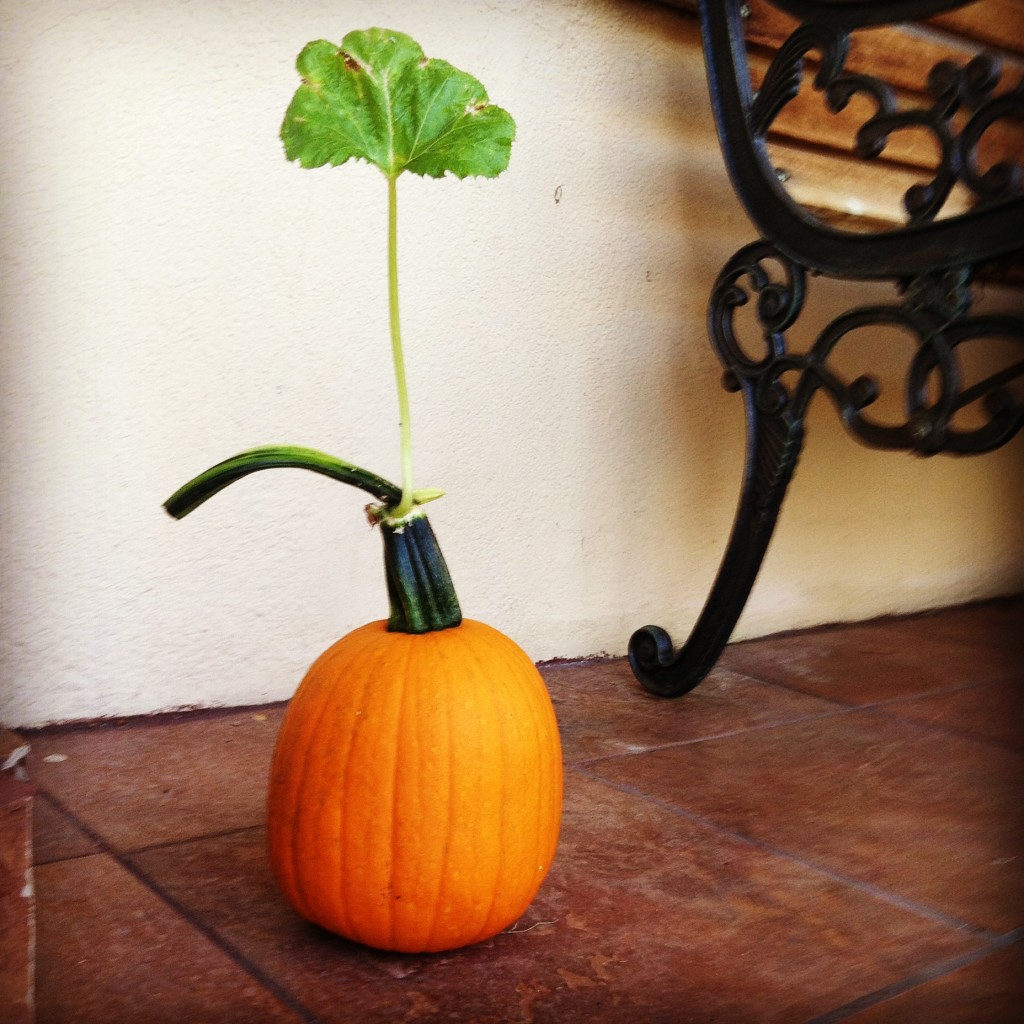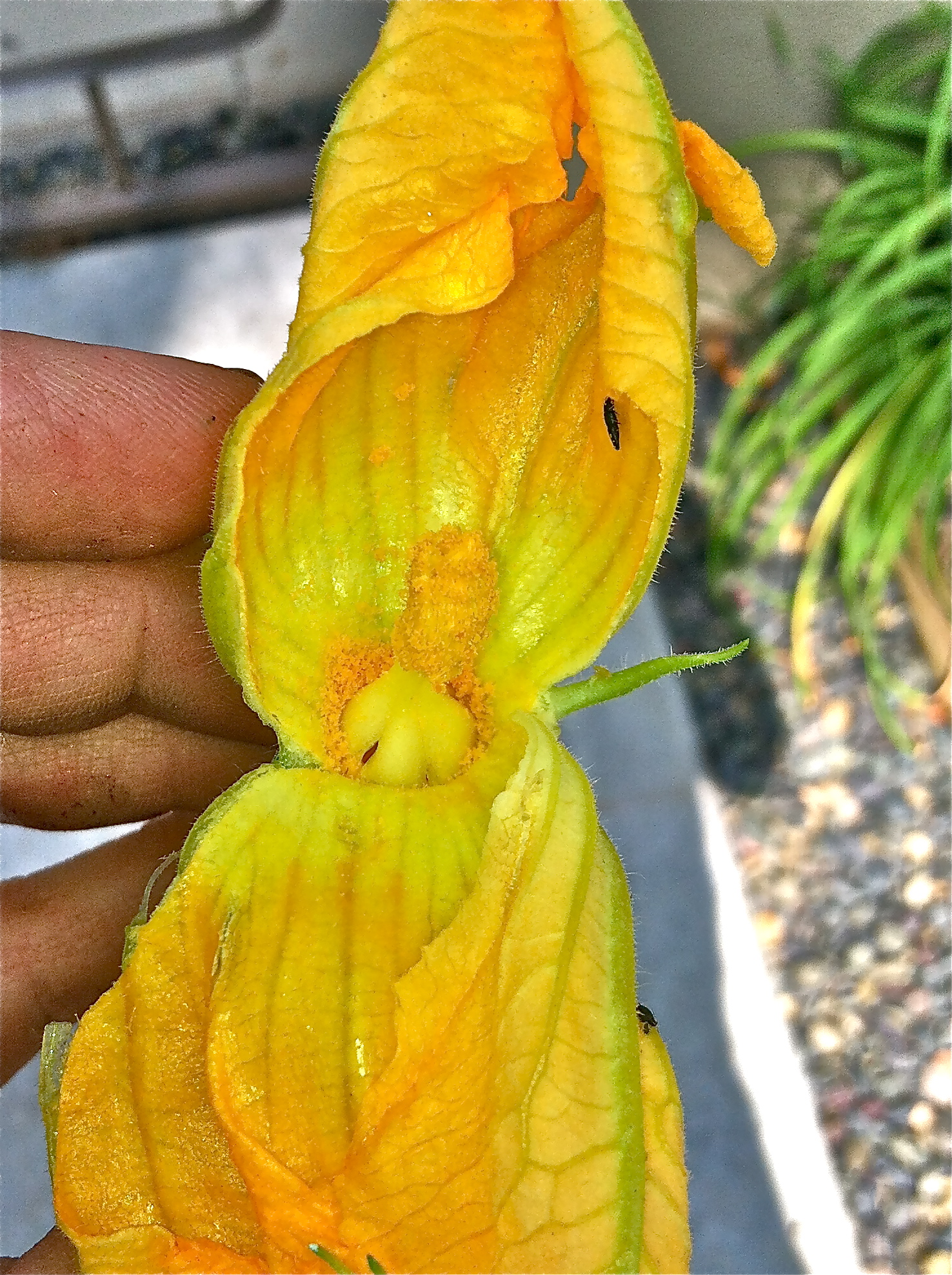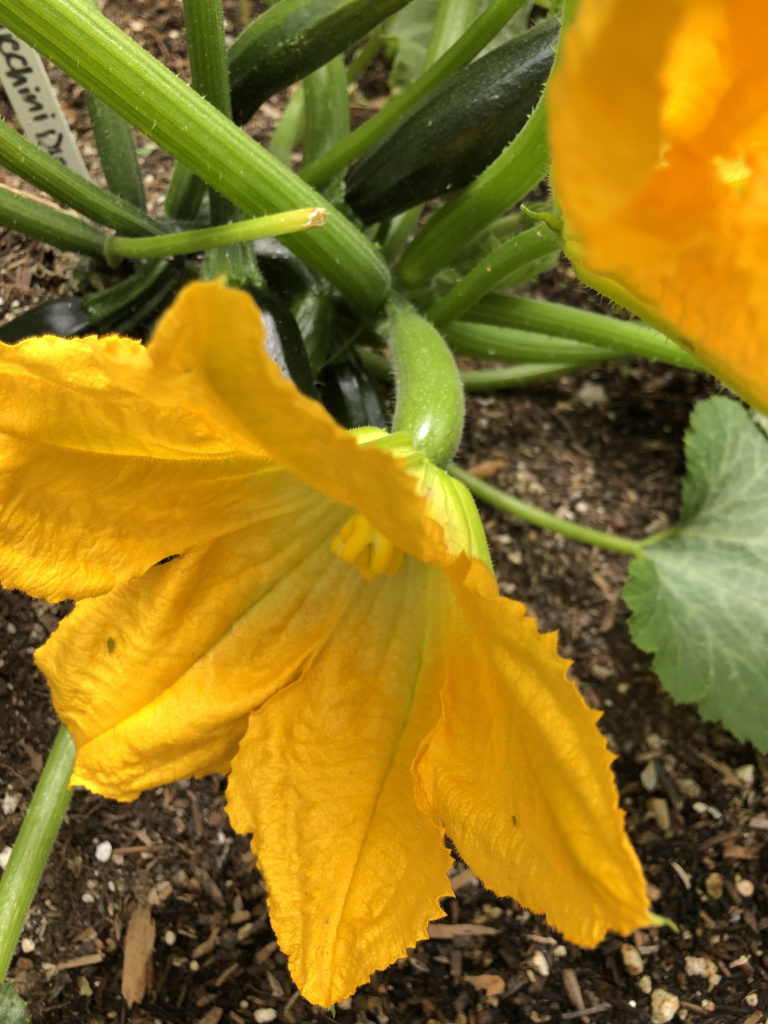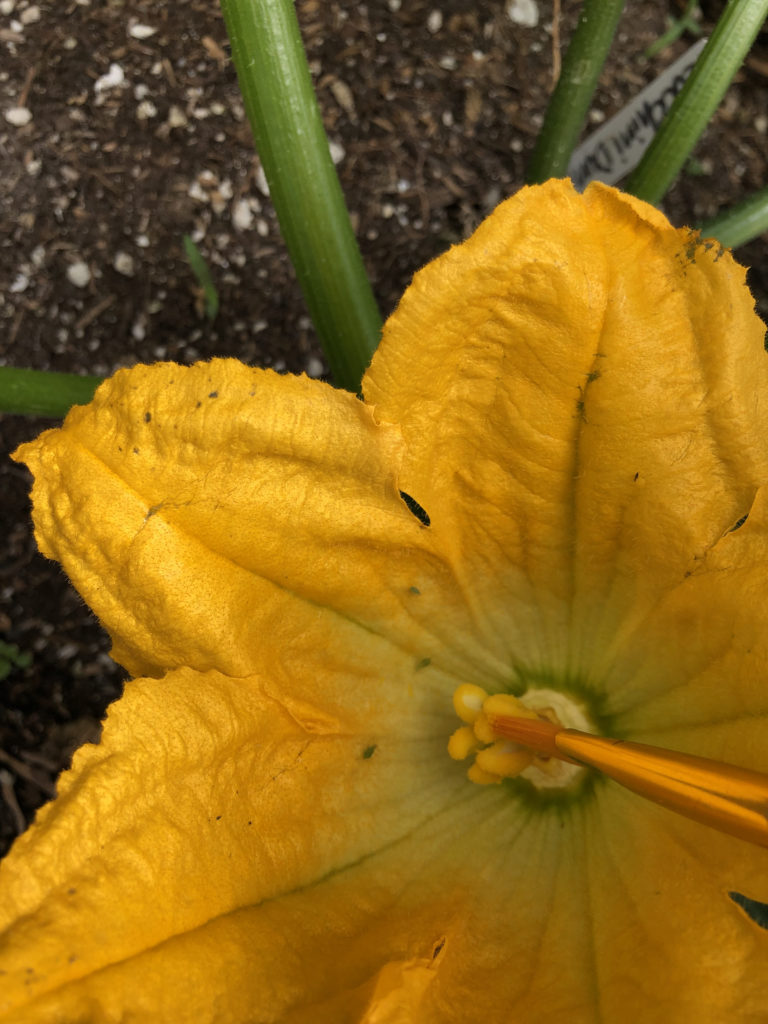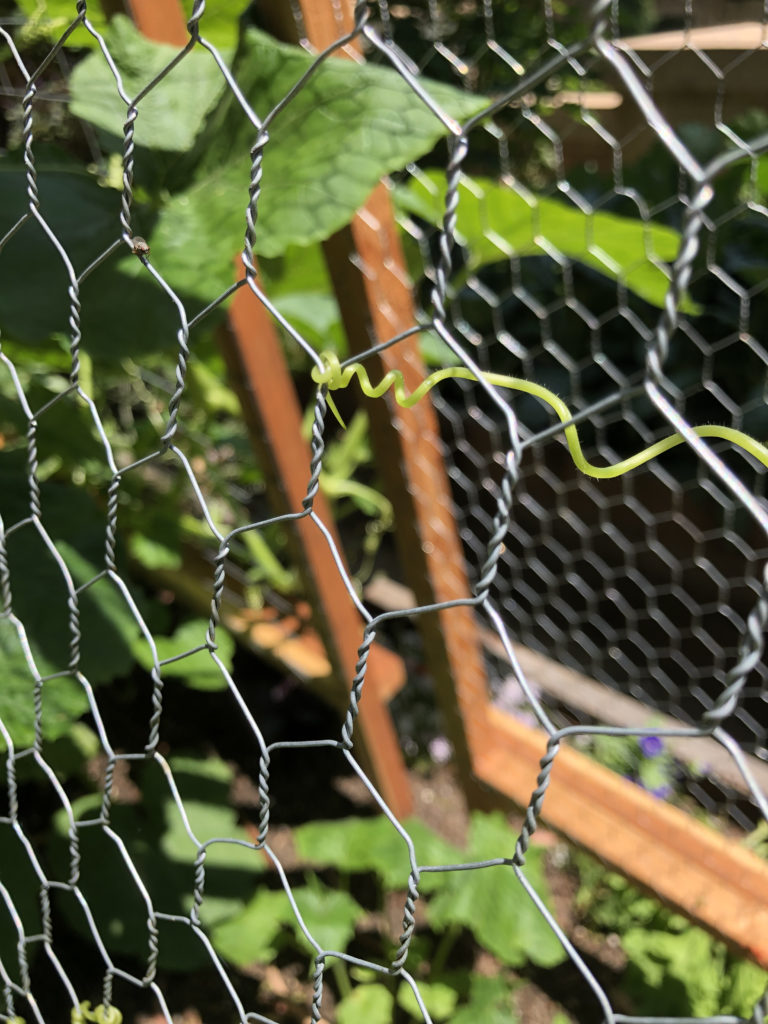How to Grow the Perfect Pumpkin Patch…or any winter squash!
1August 16, 2013 by Hope Gardens

“Each year, the Great Pumpkin rises out of the pumpkin patch that he thinks is the most sincere. He’s gotta pick this one. He’s got to. I don’t see how a pumpkin patch can be more sincere than this one. You can look around and there’s not a sign of hypocrisy. Nothing but sincerity as far as the eye can see.”
Not every summer veggie gets planted in the Spring. The summer season has a “second planting” from the beginning of July till the end of August and that is the time to plant those pumpkins for Halloween harvesting and gourds for your Thanksgiving table. Squash should be planted by seed and lucky for us, pumpkin seeds are plentiful, relatively cheap and easy to grow. Pumpkins have amazing varieties that are delicious, nutritious, decorative and super fun to carve and paint. The presence of pumpkins, and other colorful gourds, announces fall as much as a tree’s vibrant changing leaves.
As the earliest known domesticated plant, squash takes many shapes and styles. Be they Japanese squash, Mini-Hubbards, Colorful Butternuts, Buttercups, Sea Pumpkins, French Heirlooms or Cushaws they are often both yummy AND beautiful.
And with names like Mashed Potatoes, Sweet Mama, Lady Godiva, Cha Cha, Moonshine, Speckled Hound, and Knucklehead, how are you going to pick? (I can’t help you there. I just buy them all!)
Even beyond table decorations, pies and soups, gourds can be used for seed oils, birdhouses, musical instruments, toys, even body scrubs! Some even have hulless seeds that make snacking a breeze.
Before we get farther: let’s discuss the the difference between summer and winter squash. All squash can be started in spring whether they be “summer squash” or “winter squash” and they are both harvested through summer and fall. “Winter squash” can keep going, holding on to the vine into fall and be stored for months and preserved for years. “Summer squash,” on the contrary, is thin-skinned and quick-cooking: i.e. zucchini, crookneck, pattypan. “Winter squash” has a tough rind and is usually pureed or baked: pumpkin, butternut, acorn, spaghetti. As I think I’ve (over) stated, the sheer number of varieties are inspiring. Let’s grow some!
The following pumpkin growing directives can be applied to all winter squash.
First, let’s talk about the how-to’s of planting.
PLANTING PUMPKINS
Start pumpkins indoors 2 weeks before planting, if you like, or plant directly in the ground once the weather warms up. Here in Los Angeles, we can plant directly in-ground from April on. If you want guaranteed Jack – o Lantern pumpkins, start your seeds in July.
Filing large pumpkin seeds helps the baby pumpkin burst from its seed more easily. File all sides of the seeds except the pointed end and plant the seed with the pointed end down. You can also soak the seeds for a 8-12 hours to improve your chances of germination. Always use filtered water for soaking seeds.
It is recommended that you plant your seeds in mounds. I usually make a 12″ wide mound, 4″ high and put 2-3 seeds in each mound. The mounds can be made 12″ apart. The pumpkins will vine out from there wherever their instincts take them!
Pumpkin soil, like all fruiting soils (tomato, squash, pepper), needs to be high in organic matter. If you are growing in-ground dig a 12″ deep hole and fill it with potting soil and make the mound out of potting soil too. Add natural amendments and organic fertilizers to your soil. That can include but is not limited to compost (kitchen compost or the good stuff in bags), coir, vermiculite and worm castings. Fertilizers I like to use include: of course my hand-mixed vegan fertilizers, soft rock phosphate, mycorrhizae, gaia green glacial rock dust, granular humic acids, micronized azomite, kelp meal, alfalfa meal and green sand. Fertilizers high in phosphorous, calcium and other micro-nutrients, and low in nitrogen, are especially important for fruiting plants.
You can stop giving the plant nitrogen-based fertilizers once flowering begins as we are done with emphasizing plant/stem growth and want to encourage fruiting and flowering.
You should trim your mounds to one strong plant even if other seedlings are viable. Do not remove the seedlings by pulling or digging them out as squash do NOT like to be transplanted. The plant will successfully survive the move but it will fail you at the final moments with weak production. If you cannot thin your seedlings, know you are nice person but a bad gardener. It’s your choice. 😉
You CAN start your squash from seedlings by starting in compostable pots. You must keep the pots moist so they break down easily once you get them in their final planting area. And the compostable pots do dry out quickly compared to plastic pots. Once the pumpkin seedlings have their true leaves you can transfer them – it does not take long – less than week if you soil is over 70 degrees. This does not get you out of having to thin your seedlings. In fact it’s more imperative that you do.
The more space you give your pumpkins, the larger and more prolific they will become. Try to give your pumpkins as much air as possible by keeping inter-planting to a minimum and giving them room to ramble. Snip away pumpkin seedlings that look weak or are crowding their stronger brethren. Come on garden warrior – be ruthless for the greater good!
You may notice that your squash vine is rooting as it rambles. Let it if you can. In fact you can even cover those areas with some soil and/or compost. Those roots along the vine help bring nourishment to the plant. (Fun fact: if you don’t stake an indeterminate tomato, the tomato plant will grow as a vine will do the same thing.) Wherever possible, prevent the vines from crossing to prevent disease.
And don’t forget to plant a border of bee-attracting flowers as it is essential to the pumpkin’s pollination and production. Flowers are not heavy feeders and so can be interplanted with your pumpkin mounds. The vines may cover some of them but it all works out in the end.
Pumpkins need sun. Lots of sun. Like most summer veggies, they need 6-8 hours of full sun. Afternoon sun is preferred over morning sun but work with what you have.
Pumpkins also need good drainage. The mounds help with this, but still, they don’t want to be sitting is soggy conditions. Adding natural amendments such as vermiculite and coir to your soil before planting, and of course, compost, can help with drainage. That being said, pumpkins need high humidity and in inland areas where temps top 90 degrees, try watering several times a day. Again remember to water along the ground or with drip lines as water droplets can burn the plant in high heat.
Pumpkins are shallow-rooted (be very careful walking around your pumpkin vines) so they need water more often. It’s best, if possible, to water from underneath with drip or soaker hose or a bubbler attached to your hose (don’t forget the filter to protect your microbes) to control powdery mildew and promote good pollination.
PUMPKIN MAINTENANCE
POWDERY MILDEW
I would like to go out on a limb and say mildew on squash is inevitable. (I’m looking at you, cucumber.) What starts as tiny, imperceptible dots of white quickly take over an unsuspecting plant. The best defense is to treat the plant well with fertilizer and soil amendments from the beginning, so it is as healthy as possible. The next defense is to treat the plant with a preventative before you even see the mildew. The best commercial defense I have found is Green Cure. It’s very effective…and it smells good which is something I have never said about a commercial fungicide.
What about completely organic treatments? The most-recommended, well-researched organic treatment is milk and water. A 10% milk to water solution sprayed on the leaves 2x a week. I used to say compost tea was the best thing but the research is debunking this theory. It’s still worth spraying it as a fertilizer but spraying the leaves should only be done while you are employing the milk spraying as well. There is research that says the best defense is rotating the use of your homemade fungicides so that the mildew does not have time to adapt. You can also use whey and water on your plant. Now, I don’t have whey sitting around (that I know of, God help us) but some of you are very, very, very, very DIY and you may make your own cheese and you may be interested in this whole way cool whey discussion. And for you, I give you this:
Don’t ask me anything about this in the comments, cause I’m not going to do it. But if YOU do it, please let us know!
You can also use a baking soda solution: 1 tablespoon baking soda, half teaspoon of liquid soap mixed with 1 gallon of water and spray all over leaves 1x a week. Use this in a rotation with the milk solution.
Nothing cures powdery mildew that has already formed, you can only prevent it from getting worse.
That all being said some squash leaves have a variegated pattern that is not powdery mildew. So don’t be deceived! If you are not sure, turn the leaf over to see if it is in fact powdery mildew.
Leaves bearing powdery mildew should be removed and disposed of immediately. Be merciless and quick. This is how it spreads. Don’t worry…your plant will grow new leaves. Clear the bed of plant debris often to keep mildew from festering.
GROWTH AND FERTILIZATION/POLLINATION
Your vines will get at least 8-10 feet long. They’ll send out male flowers first, then female.
This is my favorite part of pumpkin growing…and you thought it was the varieties! This my friends is the birds and bees of pumpkins. Let me introduce the players: Mom and Dad.
Below, Mom, the female flower, has it’s baby squash at the base. This baby needs fertilized by the male before it can continue to grow.
Male flowers are more plentiful on the vine and generally arrive first. If you often see dead female flowers or shriveled baby fruit, you are having pollination issues.
Let’s get this party started. You will need to open up the petals of both male and female flowers if they are not already open. Then take a paintbrush to the pollen on the stamen…
transfer it to the female flower and then rub the pollen on the pistil.
Congratulations! You are now a fertility expert!
To increase the odds of fertilization, plant more flowers that attract bees. You may also want to give bees a watering station (bird bath, solar water fountain) nearby to attract them. Of course, do not use pesticides or herbicides. Also hand-watering or watering with strong, high-pressure irrigation can knock the pollen off a flower and can even knock a flower off a plant. That makes fertilization challenging.
To achieve the largest possible pumpkins, let three or four pumpkins grow on each vine and, once they’re well established, remove all but the strongest one or two. If you’d rather have more pumpkins than larger pumpkins, let the pumpkins be.
After flowers appear, you can add a non-nitrogen fertilizer (see fertilizers above) around your pumpkin’s soil. Kelp meal is always a good choice and readily available. You can add it as a dry fertilizer or buy a liquid or dry concentrate. Add 2 T of liquid concentrate to a gallon of water and drench the soil. You can also mix up a batch of liquid concentrate from the dry concentrate.
You can also use a homemade fermented liquid fertilizer. Spill it all over your plants. Spill it on yourself and no one will love you…until you shower.
Some gardeners prefer to stop fertilizing when flowers appear and start fertilizing again after the pumpkins have been trimmed to 2-4 pumpkins per vine but don’t get caught up if that’s too confusing. Pumpkins can take in organic fertilizers easily and if they don’t need it, they flush it out.
I don’t generally mulch with straw as I find it can house weeds and it tends to attract pillbugs and earwigs which can munch on your pumpkins causing unsightly marks. I like UNTREATED wood chip mulch or leaves, if I’m going to use mulch at all. It’s not totally necessary. If you do use mulch, increase your fertilization.
It is good to keep your fruit up off the ground while it is growing. I place my gourds on pieces of wood, bricks, flagstone, stepping stones or use these handy dandy cradles.
(In general, if a fruiting plant won’t produce flowers or if it’s fruits won’t ripen, cut off the growing ends of the plant and if that doesn’t work, cut back on the plant’s water.)
If you feel you can handle a deeper dive into pumpkin nerdom, here’s a little more info on vine maintenance from Wisconsin Giant Pumpkin Growers. “When the fruit reaches basketball size, align your fruit so that the stem makes a 90-degree angle to the vine. Move slowly, less than an inch per day until the right angle is achieved. This relieves stress and gives the fruit more room to grow. Don’t allow summer heat to wilt the leaves, this is very stressful to the plant. Protect your pumpkin from the sun’s scorching heat by building a small sun shelter. Prune back vine growth by mid-October so that the plant forces energy into the pumpkin. This is done by pinching off the tips of the vines, a couple per day, until all vines have been pruned.”
SUPPORTS
For a home garden or raised beds, I like to provide support for my pumpkins and squashes. This gives them some more growing room and increases aeration. Below are simple redwood trellises I bought ready-made and just lashed together into an A frame.
Above, I used pantyhose to hold small pumpkins to the support. This kept their stems from snapping and gave them plenty of room to grow. This is also a good plan for canteloupes.
This season we have now upgraded to our SQUASH EASELS made by my partner in crime.
they’re climbers!
Again, this makes great use of space and keeps fruits off the ground. Big pumpkins would be challenged by this arrangement but it’s great for cucumbers and winter squash like butternut and spaghetti.
HARVESTING
Pumpkins start off green and turn orange (or whatever their final color is) as they mature. The small ones can be grown in as little as 3 months. Large pumpkins take up to 4 months. Gourds are ready for harvesting when the stems dry out and turn brown or whenever you want to have them. Cut the gourds with a few inches of stem intact.
Throw out any bruised or rotting or munched-on gourds during your regular garden maintenance as we don’t want those pumpkins getting the plant’s energy. You can throw these pumpkins in your compost bin. You will very likely have pumpkins growing there next year!
In regards to picking out a variety to grow, you may want to avoid the varieties found at this link, as they have been trademarked by Monsanto and no one wants them earning another penny.
For sure DON’T BUY: Applachian, Harvest Moon, Jamboree HG, Orange Smoothie, Phantom, Prize Winner, Rumbo, Snackface, Spirit, Spooktacular, Trickster.
Well that’s about all you can absorb about pumpkin growing I imagine! How about we end with this. The health benefits of pumpkins are many and I found some quite surprising. Here’s a taste (tee hee):
- Pumpkins are rich in proteins that are antiviral and antifungal
- Pumpkins are high in vitamin A, potassium, iron, and other vitamins and minerals
- Pumpkins regulates digestion and have traditionally been used to expel intestinal parasites
- Pumpkins contain chemicals that inhibit the growth of candida (yeast infection) and other harmful bacteria.
- Pumpkin seeds are now considered a super food! They are high in protein and fiber, rich in essential fatty acids, high in potassium, phosphorus, magnesium, beta carotene, and iron and you betcha…high in anti-aging antioxidants.
There you have it! Thanks for reading. Now go enjoy your garden.
“I don’t see how a pumpkin patch can be more sincere than this one. You can look around and there’s not a sign of hypocrisy. Nothing but sincerity as far as the eye can see.”
Linus, It’s the Great Pumpkin, Charlie Brown
Related articles
Category DIY Garden Guides, Vegetable gardening | Tags: Agriculture, flower, Garden, Home, Home garden, Los Angeles, organic, Pepita, Plant, Powdery mildew, Pumpkin, Seed, Soil, Sowing, summer, Summer squash, Vegetable, Winter squash

